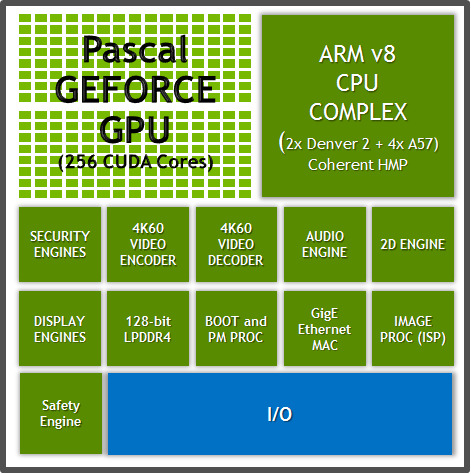NVIDIA Parker Chip Exposed: DRIVE PX 2's Heart And Brain
Graphics chip maker NVIDIA may have thrown in the towel as far as commodity smartphones are concerned, but definitely hasn't given up the fight in the mobile system-on-chip arena. In addition to its Tegra line of mobile chips still powering tablets and embedded devices, it has just revealed Parker, a new, but not completely, ARM-based system-on-chip. You aren't going to find it in any mobile device, mind you. Unless you consider cars to be literally mobile "devices". That's because this Parker chip is the beating heart of NVIDIA's DRIVE PX 2 computer aimed at powering today's and tomorrow's generation of smart cars.
NVIDIA unveiled the DRIVE PX 2 way back in CES early this year as the successor of 2015's first DRIVE PX. It was NVIDIA's attempt to gain a foothold in the growing infotainment market, where software platforms like Apple CarPlay and Android Auto are starting to butt heads. Back then, NVIDIA boasted that the DRIVE PX 2 had 12 cores, a "duodeca-core" device if there ever was one, and now we're finding out why.
Aside from sporting two discrete Pascal graphics cores, the DRIVE PX 2 also has two such Parker systems-on-chip (SoC), and each one has 6 CPU cores. That's a combination of 2 of NVIDIA's own Denver 2.0 cores and 4 Cortex-A57 cores. NVIDIA claims that its Parker chips are able to achieve 50 to 100 percent multi-core performance compared to other mobile processors. Too bad you won't find one in a smartphone or tablet.

A Parker chip also has its own Pascal GPU, with 256 CUDA cores, separate from the DRIVE PX 2's discrete graphics chips. While those are, of course, used to drive graphical interfaces, all that power, from the CPU and GPU combined, have a special purpose inside cars. They are used to power deep learning, virtualization, safety systems, and all the bells and whistles you'd expect from a modern, hi-tech vehicle, especially a self-driving one. NVIDIA says that Parker's hardware-enabled virtualization can support up to 8 virtual machines, so that it can run different systems at the same time, from infotainment, to instrumentation visuals, to driver assistance.
NVIDIA is, of course, specifically targeting self-driving cars and digital cockpits with Parker and its DRIVE PX 2 computers. It has already gained the support of 80 car makers, including Volvo who will be test driving the DRIVE PX 2 in its XC90 SUV next year.
SOURCE: NVIDIA
